The best lenses for Nikon D3100 on the market.
Wondering how to improve the performance of your camera and achieve better results? The worthy lens will help you. It serves not only as an accessory but as a device that significantly expands the capabilities of your camera.
To help you make the right choice, we have prepared a review with the best lenses for Nikon D3100, which suit different needs.
In this article, you will find decent, and what is important, affordable Nikon D3100 compatible lenses. Besides, we have described the specifications of each lens so that you can choose the best option.
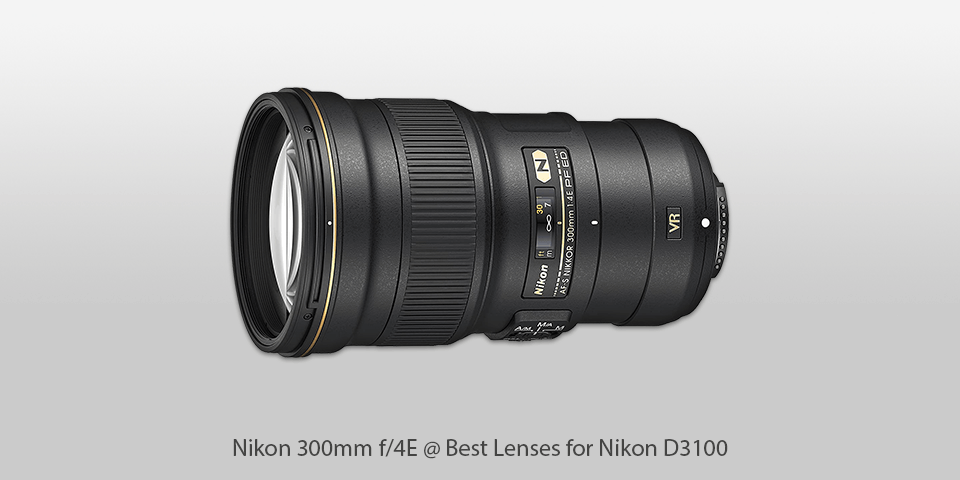
Mount: F | Diaphragm blades: 9 | Autofocus: yes | Min focus distance: 1.4 m | Max magnification: 0.24x | Filter thread: 77mm | Dimensions (WxL): 89 x 147.5 mm| Weight: 755 g
⊕ Light and compact
⊕ High sharpness
⊕ Optical stabilization
⊕ 1:4 magnification
⊖ High-priced
⊖ Not for some old models
Nikon AF-S Nikkor 300mm f/4E PF ED VR is an excellent lens for Nikon D3100 that impresses with its reach and aperture. The lens has a competitive optical quality, offering decent close focusing distance, good sharpness, and optical stabilization. However, its increased price is justified by the size. Similar lenses for a lower cost are larger and heavier. If you are looking for a compact telephoto lens for D3100, the Nikon AF-S is a great option.
The Sigma 150-600mm f/5-6.3 DG OS HSM Contemporary is a lower-priced alternative that most photographers, who prefer zoom, are likely to choose. This lens has good sharpness characteristics, but unlike the Nikon 300mm f/4E, it collects less light and is bulkier. For those, who travel frequently, the Nikon 300mm f/4E is the best option without a doubt. Plus, the lens works with full-frame cameras as well as Nikon APS-C DSLRs.
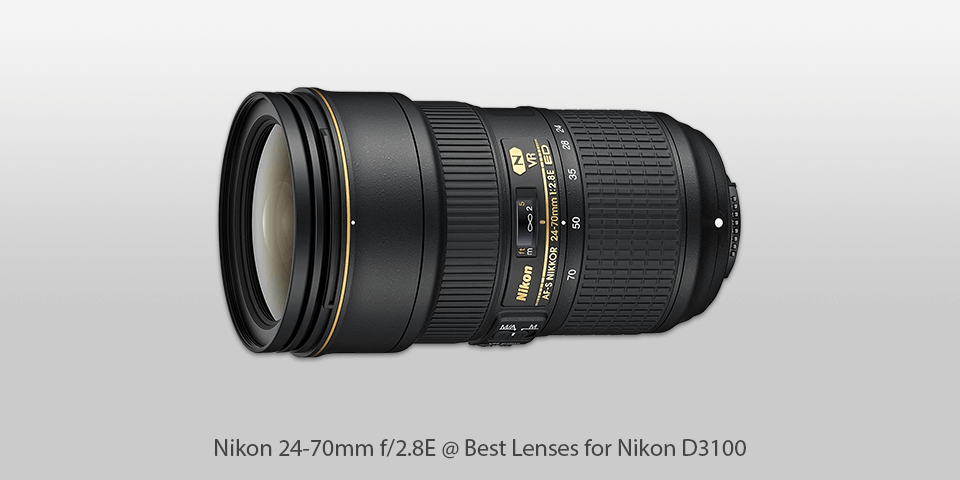
Mount: F | Diaphragm blades: 9 | Autofocus: yes | Min focus distance: 38 cm| Max magnification: 0.27x | Filter thread: 82mm | Dimensions (WxL): 88 x 154.5 mm| Weight: 1070 g
⊕ Well-stabilized design
⊕ Permanent f/2.8 aperture
⊕ Sharpness
⊕ Long-lasting case
⊖ Uneven lighting at f/2.8
⊖ Edge performance issues
⊖ Causes distortion
The 24-70mm f/2.8E is an excellent Nikon D3100 zoom lens that is often used for wedding or event photography. This is because the camera captures a wide field of view when you are limited in free space and want to fill the frame. Due to the good zoom, you can use the lens for portraits. What sets the Nikon AF-S Nikkor 24-70mm f/2.8E ED VR apart from the competition is the vibration reduction option that most lenses in this category, including the acclaimed Canon EF 24-70mm f/2.8L II USM, lack.
By using slow shutter speed, you can shoot handheld. That being said, a low ISO setting will give you a clear image, while a smaller aperture will increase the depth of field.
Although the lens causes slight distortion and poor frame edges at f/2.8, overall 24-70mm has good sharpness. It costs more than the previous version of this model, offering advanced features, while its predecessor remains on the list of lenses for users with a limited budget.
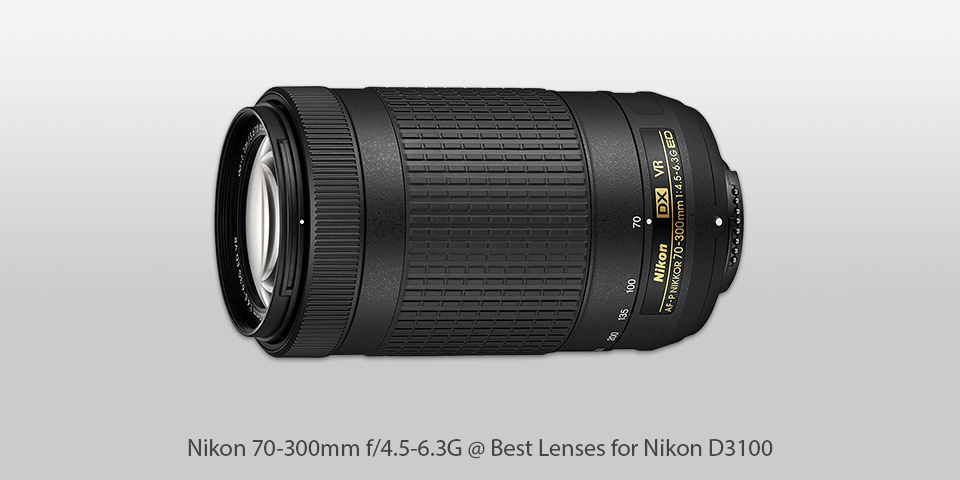
Mount: F | Diaphragm blades: 9 | Autofocus: yes | Min focus distance: 1.2 m | Max magnification: 0.25x | Filter thread: 67mm | Dimensions (WxL): 80.5 x 146 mm| Weight: 680 g
⊕ Sharp images
⊕ Strong zoom range
⊕ Well-stabilized optics
⊕ Seamless, quiet autofocus
⊖ Dull angles at wider apertures
⊖ Soft edges at 70mm
⊖ Poor light-gathering capabilities
⊖ Doesn’t work for older SLRs
Nikkor 70-300mm f/4.5-5.6E ED VR is one of the universal Nikon DSLR D3100 lenses suitable for both full-frame (FX) and APS-C (DX) cameras. When used on full-frame cameras, it covers medium to long telephoto range. At the same time, image quality is maintained at a high level, except for dim corners and soft edges at 70mm.
On an APS-C camera that uses the center of the picture circle, the 105-450mm field of view is great for shooting sports events, wildlife, and other distance-demanding objects. In general, Nikkor 70-300mm is a compact telephoto lens for D3100, which is chosen for shooting outdoors in good lighting conditions.
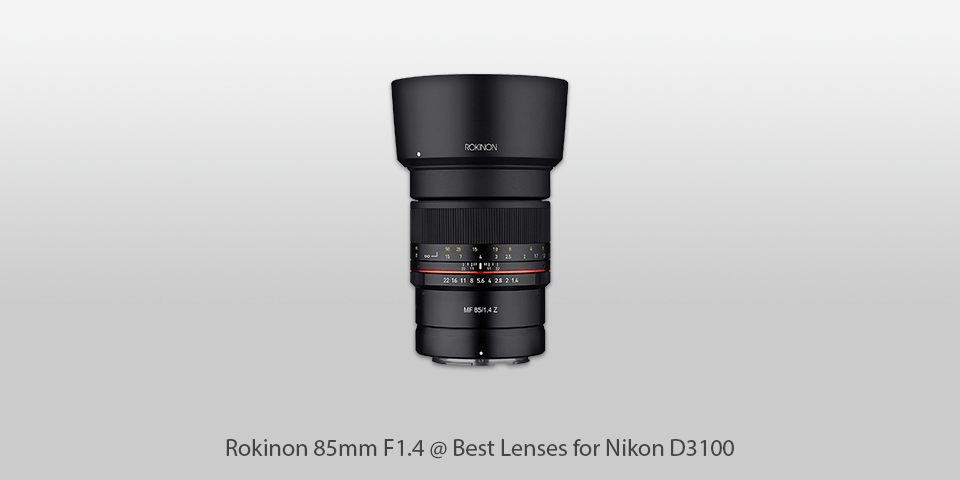
Mount: F | Diaphragm blades: 8 | Autofocus: no | Min focus distance: 1m | Max magnification: -| Filter thread: 72mm | Dimensions (WxL): 78 x 72.2 mm| Weight: 520 g
⊕ High sharpness
⊕ Even lighting across the frame
⊕ Unnoticeable distortion
⊕ Supports multiple systems
⊖ Soft edges at f/1.4
⊖ Manual focus design issues
⊖ Goes without optical stabilization
If manual focusing doesn't scare you off, then the Rokinon 85mm F1.4 AS IF UMC is a good option to choose. At f/2, the lens delivers high-quality results, and even at f/1.4, you get good shots with little softness. This softness will be appropriate for a portrait photo, making pictures more eye-pleasing. We do not recommend narrowing the aperture even further, as the resulting photo quality will hardly please you.
The Rokinon 85mm F1.4 AS IF UMC is a fairly affordable $400 lens and is often available at a reduced cost, so you can get another $100 off when buying the lens. The Rokinon 85mm F1.4 AS IF UMC does not compete with our favorite Nikon AF-S Nikkor 85mm f/1.8G, still, it has an advantage of a multi-camera support.
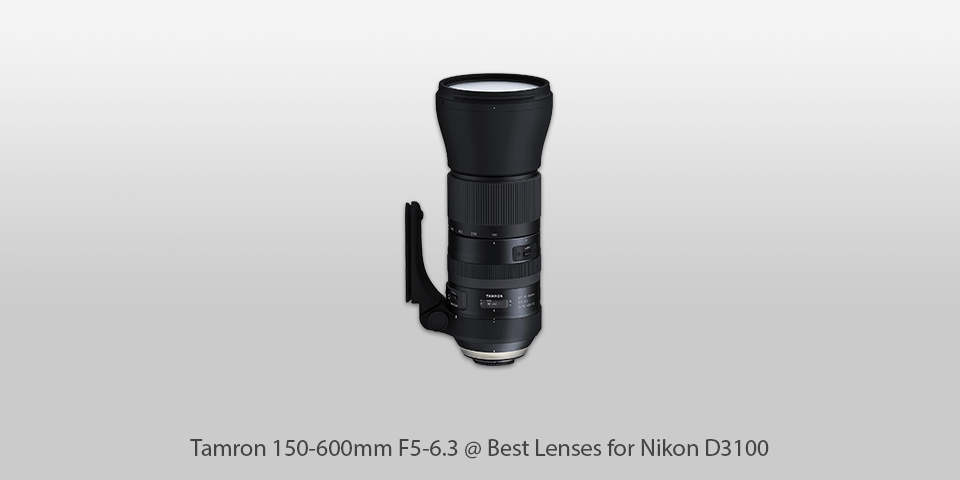
Mount: EF| Diaphragm blades: 9 | Autofocus: yes | Min focus distance: 2.7m | Max magnification: 0.2x| Filter thread: 95 mm | Dimensions (WxL): 105.66 x 257.81 mm| Weight: 1.95 kg
⊕ Highly sharp across the frame
⊕ Great stabilization
⊕ Fast AF
⊕ Lockable zoom mechanism
⊖ Poor edges at wide and telephoto extremes
⊖ Autofocus operation is limited
The Tamron SP 150-600mm F/5-6.3 Di VC USD G2 is a good camera lens for Nikon D3100, but not the best on the market. With wide and telephoto extremes, you get soft angles that can be saved by narrowing the aperture, but the sharpness of the photos is kept high with the focal lengths in between.
The lens is well-stabilized and lightweight, it has a strong weather-sealed body, that makes it a good option to consider. Despite the soft edges, the Tamron SP 150-600mm F/5-6.3 Di VC USD G2 is a good performer, especially when used with an APS-C DSLR.
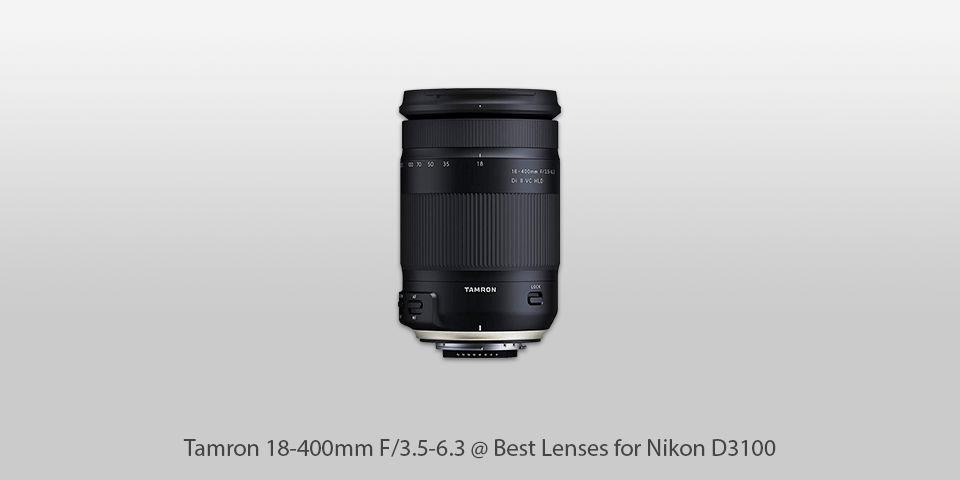
Mount: EF | Diaphragm blades: 7| Autofocus: yes | Min focus distance: 45 cm | Max magnification: 0.34x | Filter thread: 72mm | Dimensions (WxL): 79 x 123.9 mm| Weight: 710 g
⊕ 22.2x zoom range
⊕ High image quality
⊕ IS
⊖ Weak wide-open performance beyond 300mm
⊖ Chromatic aberration at longer focal lengths
⊖ Noticeable distortion
The Tamron 18-400mm f/3.5-6.3 Di II VC HLD is one of the best lenses for Nikon D3100 that we have tested. Despite several drawbacks, the incredible zoom range and affordable price make up for this. Besides, the lens is convenient for everyday use due to its size. The Tamron 18-400mm has a narrow maximum aperture. You may be disappointed with the image quality at the edges at the long end of the zoom range if you don't narrow the aperture. But unlike the $579 Sigma 18-300mm Contemporary, the $650 Tamron 18-400mm covers a larger zoom range, going ahead of the competitor.
When comparing the Tamron 18-400mm with other manufacturers, it is difficult to find an alternative. The only similar model Canon offers is the EF-S 18-200mm for $699.99. Nikon has more analogs, one of which is the powerful but expensive DX Nikkor 18-300mm f/3.5-5.6G ED VR lens for $1,000. Another model is the DX Nikkor 18-300mm f/3.5-6.3G ED for $700. If you use a Nikon DSLR and ready to spend more, we recommend looking at the 18-300mm Nikon D3100 prime lens.
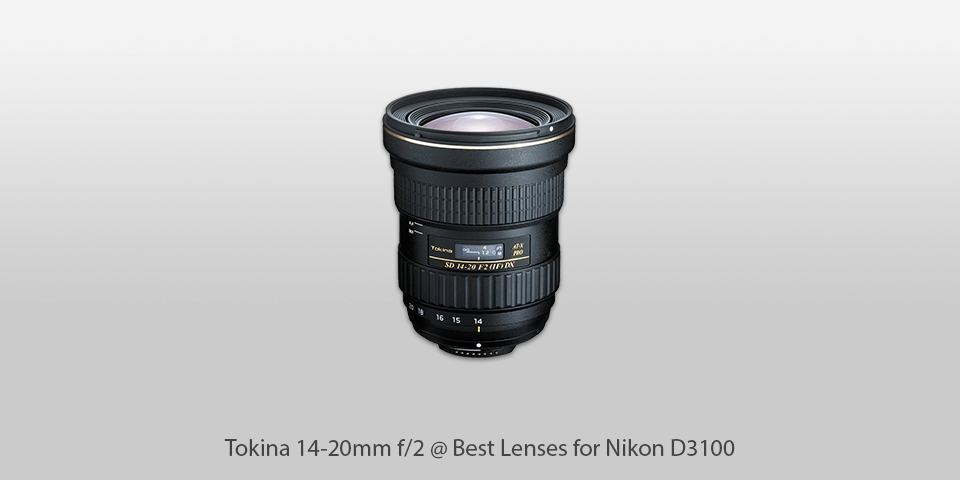
Mount: F | Diaphragm blades: 9 | Autofocus: yes | Min focus distance: - | Max magnification: 0.12x | Filter thread: 82mm | Dimensions (WxL): 89 x 106 mm| Weight: 725 g
⊕ Great for photos and videos
⊕ Sharp
⊕ Vivid
⊕ Remarkable quality across the frame
⊖ No image stabilization mechanism
The Tokina 14-20 mm f/2 stands out among competitors with its brightness, and the sharpness is similar to other models in this series, but it knocks them out at f/2. The Tokina 14-20 mm f/2, along with the Sigma 18-35mm f/1.8 Art (which starts less at focusing distances where Tokina stops), are among the world record holders in terms of wide-angle lens brightness.
It offers zooms for cameras with an APS-C sensor. Like the less bright wide-angle zooms on cameras with a full-frame sensor, the Tokina 14-20 mm f/2 with APS-C sensors also offers beautiful bokeh. This model works as an efficient Nikon D3100 portrait lens.
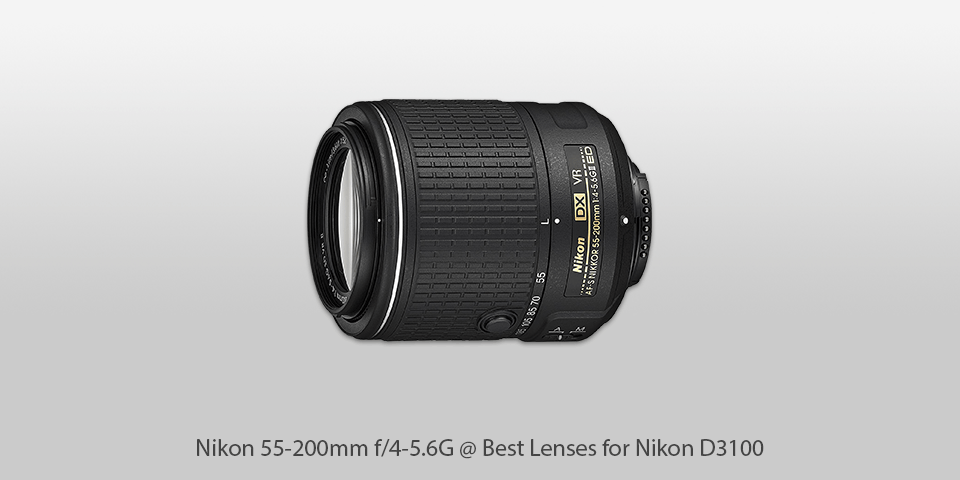
Mount: F | Diaphragm blades: 7 | Autofocus: yes | Min focus distance: 1.1m | Max magnification: - | Filter thread: 52mm | Dimensions (WxL): 73*100 | Weight: 335g
⊕ Image stabilization mechanism
⊕ Embedded autofocus
⊕ Incorporated hood
⊕ Internal focusing
⊖ Aperture slows down at the wide end
⊖ Variable aperture
⊖ Weak aperture at Tele end
Compact and foldable lenses are not only convenient but also popular these days, because few people want to carry a huge bag with a bunch of removable lenses.
The 55-200mm f/4-5.6G is a fairly good lens for Nikon D3100 that offers entry-level optics functionality. For it to be truly valuable to a buyer, the price has to come down slightly, as the lens is now £100 more expensive than its non-collapsible analogs.
| Image | Name | Features | |
|---|---|---|---|
 |
Nikon 300mm f/4E
Our Choice |
CHECK PRICE→ | |
 |
Nikon 24-70mm f/2.8E
Professional |
CHECK PRICE → | |
 |
Nikon 70-300mm f/4.5-6.3G
Budget |
CHECK PRICE → |
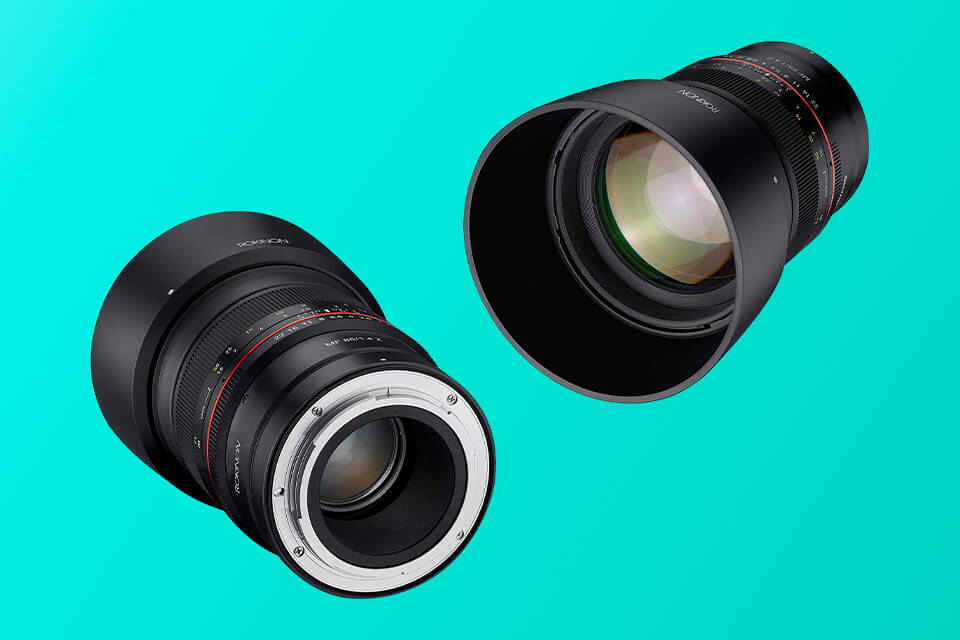
To determine the size of a lens, you should clearly understand what you are going to use it for. The size of a lens is directly related to the features it offers, so you have to pick out features you need to achieve great results.
One of the functions that directly depends on the size of the lens is the focal length. We recommend paying more attention to this particular parameter because it affects the type of photos you can take.
Buying a new lens is an important step for any photographer. The lens plays a huge role in the way you’ll present various objects. Therefore, when choosing a lens, it is worth paying attention to the main functions that will help you achieve the desired results.
As we’ve said, you need to choose the lens based on how you plan to use it. Ask yourself a couple of questions. Do you need a professional lens or the one for an amateurish shooting? Are you interested in Nikon portrait lens or the one to shoot at a distance? Once you answer these questions, it will be easier to choose a perfect model.
The next step is to select the desired focal length. When you understand the purpose of use, it is easier for you to determine the suitable focal length. Some work better for wide-angle images, others for close-ups. Possibly, you may need the one that lets you take photos, using various effects.
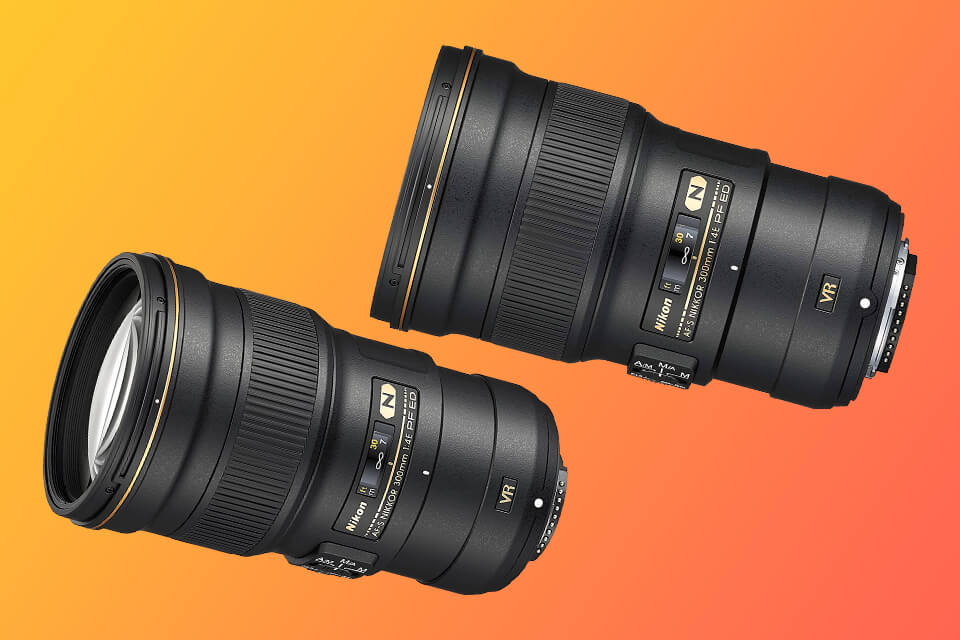
Although lens prices vary, it is generally not cheap to buy a lens. Paying a tidy sum for a device, you must be sure of its quality and durability. Check the specifications to avoid buying a poor-quality lens.
Nowadays, the Nikon D3100 camera hasn’t lost its relevance and is rightfully considered one of the best cameras. Despite its small size, it is easy-to-use. Compared to professional cameras, this entry-level DSLR is more compact. You may have doubts about its durability due to its small weight but lay it aside as the D3100 has a strong body.
Nikon D3100 was first announced by the manufacturer on August 19, 2010. It replaced the D3000 as Nikon's entry-level DSLR. The D3100 has been designed with the new EXPEED 2 image processor. It is the first DSLR camera from Nikon to feature high-definition video recording, continuous AF, and H.
Like other similar cameras from Nikon, the D3100 comes without an autofocus motor. To set up automatic autofocus, you need to purchase one of 162 lenses with a built-in autofocus motor. Using other lenses, you can rely on the camera electronic rangefinder for manual focus adjustment.
Nikon D3100 is suitable for those, who are just getting started with photography. This excellent entry-level DSLR offers you various functions and high-end performance. The camera stands out from the competition with high-quality images due to a 14.2 MP DX CMOS image sensor, as well as support for Full HD video recording. In our opinion, the Nikon D3100 is worth considering.

 Rating
Rating